Ford F-250 (1998-2022) firing order — diagram & guide
Empowering your Ford F-250 with the right firing order.

Ever since the 1950s, Ford’s F-Series trucks have been a lineup that other brands looked up to. If you own one produced from the year 2000 onward, you’ll know how versatile and convenient it is for both daily driving and having that extra towing capacity.
Especially if you own an F-250 Super Duty, it’s crucial to maintain the engine properly and that’s what this guide on the Ford F-250 (1998-2022) firing order will help you do. Don’t worry – we’ll cover all the versions and engine options from the first-gen of the F-250 Super Duty to the fifth-gen model just in case.
| CAR MODEL YEAR | ENGINE | FIRING ORDER |
|---|---|---|
| 1998-2004 F-250 (1st Gen) | 5.4L V8 | 1-3-7-2-6-5-4-8 |
| 6.8L V10 | 1-6-5-10-2-7-3-8-4-9 | |
| 7.3L PowerStroke | 1-2-7-3-4-5-6-8 | |
| 2006-2011 F-250 (2nd Gen) | 6.4L PowerStroke | 1-2-7-3-4-5-6-8 |
| 6.2L V8 | 1-5-4-8-6-3-7-2 | |
| 6.7L PowerStroke | 1-3-7-2-6-5-4-8 | |
| 2017-2022 F-250 (4rd Gen) | 7.3L V8 | 1-5-4-8-6-3-7-2 |
First-generation F-250 (1998-2004) firing order
The first generation of the F-250 Super Duty started production back in 1998 but it went on for six years up to 2004. So, that’s the first generation of the car we’ll discuss and it mostly had V8 engines as main options.
Ford F-250 5.4L firing order

The base engine option for the first-gen F-250 Super Duty was the 5.4-liter V8. The Ford F-250 5.4L firing order is 1-3-7-2-6-5-4-8 and the engine features a basic small-block V8 configuration. The first cylinder is on the passenger’s side and it’s the one closest to the radiator.
Cylinders 2, 3, and 4 are also within the same bank, going from the front of the engine towards the rear end, while cylinders 5, 6, 7, and 8 are on the driver’s side. The 5.4-liter V8 was a base option for the first-gen F-250 and it stuck a while longer with the second generation as well, along with the “SVT Cobra” version of the F-250 that was supercharged.
Ford F-250 6.8L firing order
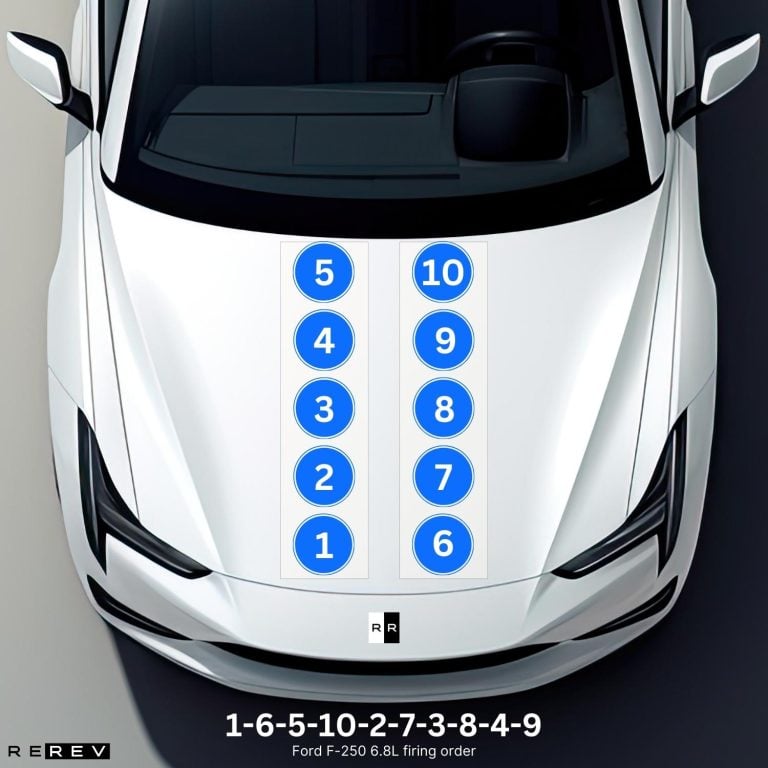
For those looking to get a true Super Duty powertrain, the V10 engine was a no-brainer. So, if you own this version of the truck, the Ford F-250 6.8L firing order is 1-6-5-10-2-7-3-8-4-9 and this engine has a slightly different application of the firing order.
The cylinder configuration is different having in mind it has two extra cylinders, so you’ll find cylinders 1, 2, 3, 4, and 5 within the passenger’s cylinder bank, front to rear. The driver’s side cylinder bank houses cylinders 6, 7, 8, 9, and 10.
So, the first cylinder is the front-most one on the passenger’s side, while the 10th cylinder is on the driver’s side, closest to the steering wheel.
Ford F-250 7.3L firing order
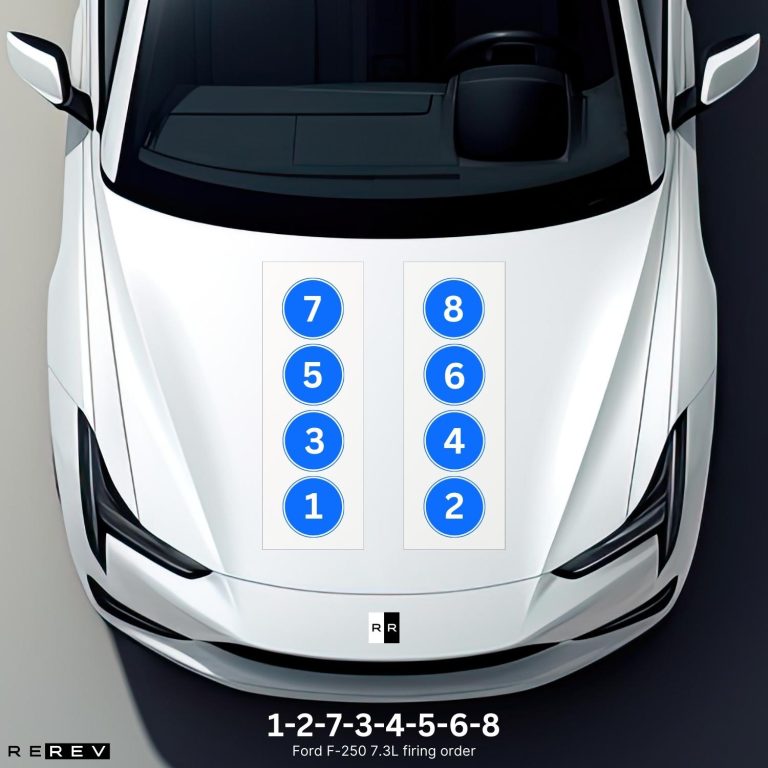
Now we move on with the engine that has the most towing capacity among the lineup of F-250 engines and that’s the 7.3-liter PowerStroke. This massive diesel-powered V8 has the most torque among the three options, and the Ford F-250 7.3L firing order is 1-2-7-3-4-5-6-8.
This is where things get sketchy since some drivers misplace the firing order of the 5.4-liter V8 with the diesel V8, so it’s crucial to apply the firing order accordingly. If you own an F-250 powered by a PowerStroke engine, cylinders 1, 3, 5, and 7 are on the passenger’s side, and cylinders 2, 4, 6, and 8 are on the driver’s side, front to rear.
Second-generation F-250 (2006-2011) firing order
The second-gen of the F-250 brought some significant changes since the PowerStroke engine was removed from the lineup. However, the V10 and the 5.4-liter V8 remained in use so we won’t address these again.
Instead, we’ll focus on the new 6.4-liter diesel engine, along with the 6.2-liter petrol V8 and the newly-added 6.7-liter diesel similar to the PowerStroke engine which was added in the facelift version.
Ford F-250 6.4L firing order
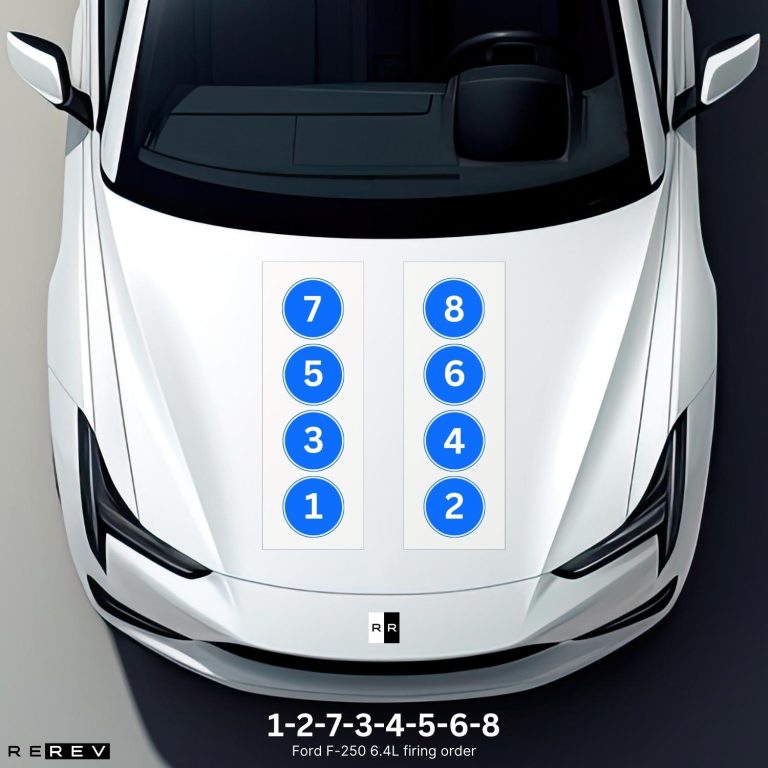
Since the 7.3-liter PowerStroke engine has been removed from the lineup, the new 6.4-liter diesel took its place within F-250 engines. The Ford F-250 6.4L firing order is 1-2-7-3-4-5-6-8 which is the same firing order used for the other PowerStroke diesel engines.
The cylinder configuration is also the same as for the previous 7.3-liter engine. So, you have cylinders 1, 3, 5, and 7 on the passenger’s side, and cylinders 2, 4, 6, and 8 on the driver’s side.
Ford F-250 6.2L firing order
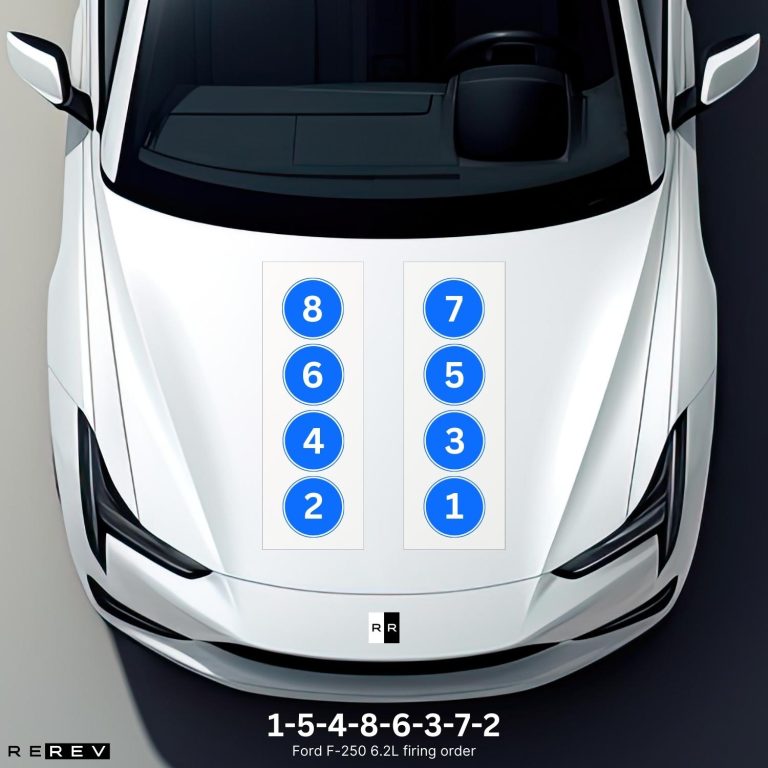
Along with the 6.4-liter engine, the second-gen of the F-250 Super Duty also got a V8 upgrade among petrol engines. The Ford F-250 6.2L firing order is 1-5-4-8-6-3-7-2 and the cylinder configuration is 1, 3, 5, 7 on the driver’s side and 2, 4, 6, and 8 on the passenger’s side.
Ford F-250 6.7L firing order
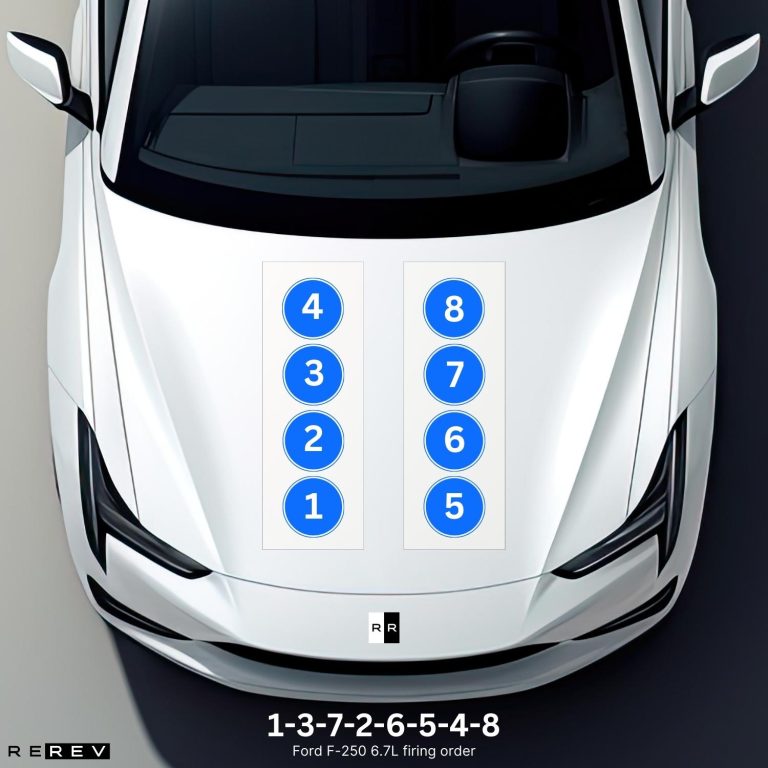
Finally, the latest addition to the F-250’s family of engines in the second-gen model was the 6.7-liter PowerStroke diesel. However, this one has a different firing order from the 6.4-liter one, so the Ford F-250 6.7L firing order is 1-3-7-2-6-5-4-8.
Plus, the cylinder layout isn’t the same as for the 6.4-liter one since cylinders 1, 2, 3, and 4 are on the passenger’s side. The driver’s side cylinder bank includes cylinders 5, 6, 7, and 8.
Third-generation F-250 (2011-2016) firing order
For the third generation of the F-250, nothing much has changed in terms of the available engines. The 6.2-liter V8 and the 6.7-liter PowerStroke diesel also remained on offer.
So, we’ll jump to the fourth-gen models as we’ve already discussed the firing orders of all the previously mentioned engines.
Fourth-generation F-250 (2017-2022) firing order
The fourth-gen F-250 also featured the 6.2-liter V8 engine and the 6.7-liter diesel one. However, there’s the additional 7.3-liter V8 and this time it’s not the PowerStroke but the gasoline engine. So, we’ll discuss that one as the final option before the fifth-gen model was revealed in 2023.
Ford F-250 7.3L firing order
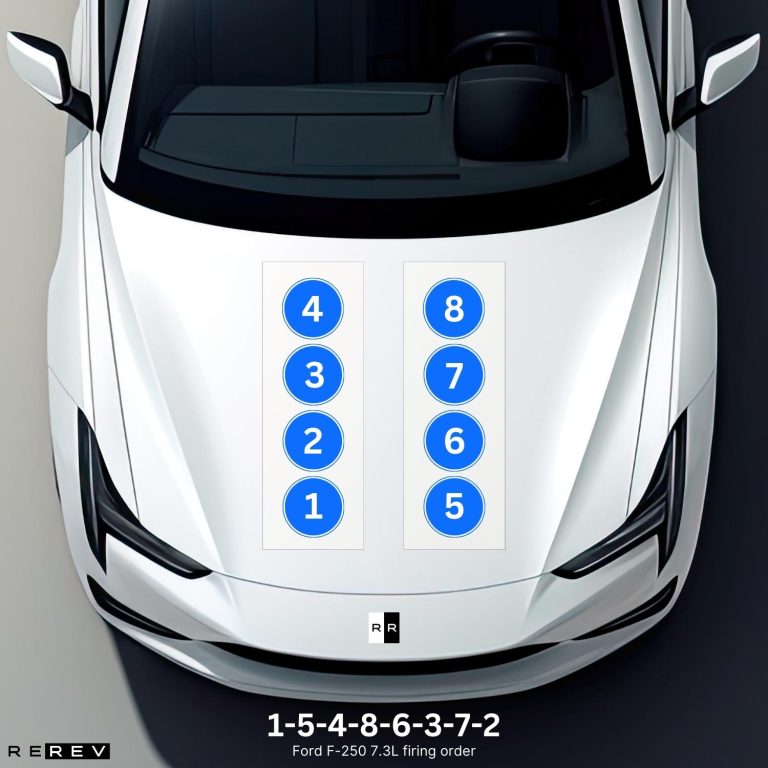
The Ford F-250 7.3L firing order is 1-5-4-8-6-3-7-2 and this one was specifically added for the Super Duty high-capacity engine. The cylinder configuration of the engine is 1, 2, 3, and 4 on the passenger’s side front to rear, with cylinders 5, 6, 7, and 8 being on the driver’s side.
Our take
Well, now that we’ve gone through this guide on the Ford F-250 firing order, we hope you have a clear picture of what your engine requires for proper maintenance.
Please double-check the cylinder arrangement before applying for the firing order since, as you were able to see in this guide, there are substantial differences.